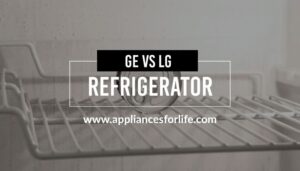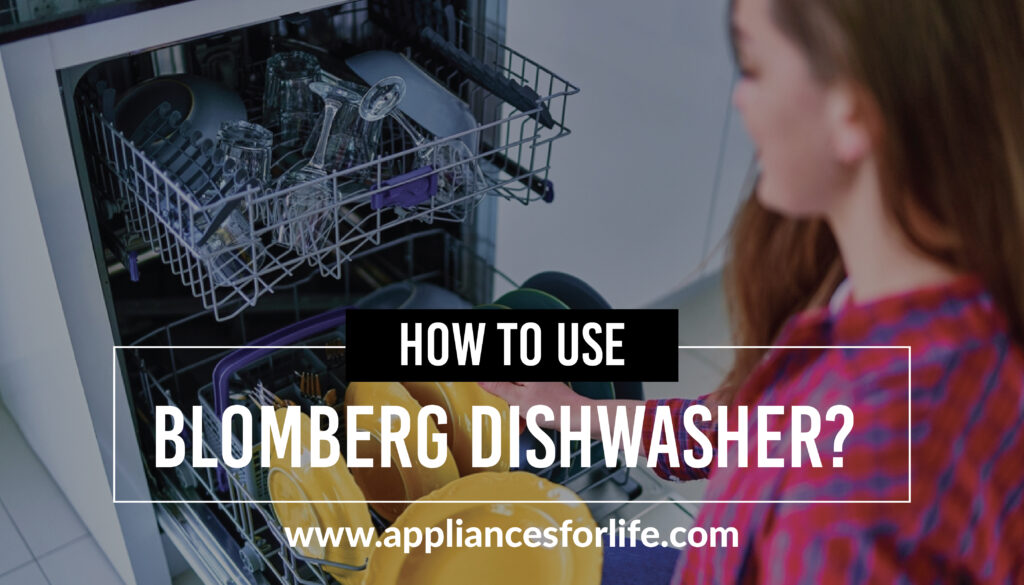- The worldwide acceptance of dishwasher units has revealed that they are not just home appliances for luxury. Dishwashers do not just help you turn those heaps of heavily soiled kitchenware into sparkling dishes/cutlery, they also make sure that they are more than 90 percent germ-free. Dishwashers are time-efficient and can also be really durable if they are used according to laid down guidelines.
- There are designated methods for the placement of dishes in the dishwasher unit, there are specific things you can not wash in a dishwasher, and there are some cleaning routines to stick to otherwise, your dishwasher will not last as long as it should. Find out in detail, the way to appropriately use your Blomberg dishwasher in this article.
How Dishwashers Work
Whether you are the inquisitive type or you are the type that does not really bother about how things work, you must’ve stopped, even for a split second to wonder how dishwashers work how they do. This is even more likely for those who constantly use their dishwashers. Well, if you belong to my category- the category of persons who wonder what happens on the inside of a dishwasher when it is closed then rest assured, you will finally get some answers.
Table of Contents
Toggle
Perhaps just like you, I used to wonder if dishwashers were just filled to the brim with water, constituting some kind of pool for dishes to bathe in however the operation of a dishwasher is similar to the operation of a car wash, especially with its in-built ‘sprinkler’ system.
Looking Inside Your Dishwasher
The major component of a dishwashing process is the water supply. To get water, the dishwasher pulls in water from your water supply via its external hookup. And eventually, when a cycle begins, water is pumped into a pool at the bottom of the dishwasher. Now, because another key instrument for clean and sanitized dishes is hot water, the water temperature in the dishwasher is increased to a level of about 130 degrees Fahrenheit to 140 degrees Fahrenheit, even though the heating does not happen instantaneously. It occurs gradually through the help of the heating element at the bottom of the dishwasher.
Almost concurrently, the heated water in the pool is mixed with some dishwasher detergent and sent into the spray arms or as I like to call it-‘the sprinkler system’ that is found throughout the dishwasher. The water surges through the spray arms and hits the dirty dishes, hopefully taking some nasty food stains with it.
It does not end here, the water drips back into the pool at the pool below where it is filtered and reheated. When this is done, the filtered and reheated water is then sent back into your dishwasher spray arms for it to be re-used. Once the water is heated, the heater automatically goes off, but the pumps continue pushing water through the spray arms. At the end of that particular wash cycle, all of the water is drained (that’s the gurgling sound you sometimes hear your dishwasher make), new, unused water takes its place, and the cycle begins anew.
The Three Stages of a dishwasher cleaning
1. Pre-Wash/rinse
This cycle is not intended for cleaning at all although hot water is supplied in the process. As a matter of fact, detergent is added to the heated water in some dishwashers but this is all for the softening of the food particles on your dishes thus preparing the dishes for a smooth wash. The pre-wash cycle is typically only a few minutes long.
2. Main Wash
This is the stage of actual washing. Here, water is supplied to the dishwasher, heated up, and mixed with some dishwasher detergent. After the mixture, it is pumped into the spray arms that are positioned throughout the dishwasher. The spray arms spray your dishes as soon as washing begins and when washing is done, the water used is then filtered to extract food particles and other dirt, reheated, and re-supplied into the spray arms for further use. At the end of the washing, all the water used is drained.
Depending on the cycle, the main wash can take anywhere from 20 to 60 minutes and may repeat multiple times throughout the cycle duration.
3. Final wash and rinse
This part pulls in new clean water and begins the heating/spraying/filtering/heating cycle anew. Just like the main wash, the heater is eventually shut off while the spraying continues.
The final wash/rinse may or may not use detergent. Like the main wash, the final wash/rinse can take 20 to 60 minutes and may repeat multiple times throughout the cycle duration.
Important Safety Precautions for Blomberg Dishwashers
When using a home appliance like a dishwasher, there are some dos and don’ts and precautions that one must strictly commit to if one would enjoy the durability guaranteed for Blomberg Dishwashers. After all, when one is ignorant about the appropriate usage of a particular product, its abuse is inevitable. Hence, a dishwasher like every other home appliance must be used according to the dictates of the user manual. When the information on the user manual is studiously followed, fire/explosion and damage risks can be significantly reduced. Worst-case scenarios of grave injuries and loss of life can also be avoided when safety precautions are taken at all times.
Precautions:
- Do not operate your dishwasher unless all the enclosure panels are properly in place. While making sure that all enclosure panels are properly shut, try not to tamper with your dishwasher controls.
- Whatever you do, do not the dishwasher or any parts thereof, a stool. This kind of use is apparently abusive hence it should be avoided at all costs. In addition to using a dishwasher appropriately, note that the cup racks are designed to support cups, glasses, and kitchen utensils. When the cup racks are in the dishwasher do not lean on or use the cup racks to support your body weight.
- Do not allow children to play anywhere near the dishwasher and get rid of Limescale and odor causing residue as often as possible
- Use only detergents or rinse aids recommended for use in a household dishwasher and keep them in a dry place out of the reach of children. Check that the detergent dispenser is empty after the completion of each wash program.
- Avoid frequent contact with dishwasher detergent on the skin and do not swallow or inhale it as this substance is made of alkaline and can cause some serious damage to the body. Needless to say, do not drink water from the dishwasher because it’ll contain harmful residues.
- Under certain conditions hydrogen gas may be produced in a hot water heater system that has not been used for two weeks or more. Hydrogen gas is explosive. If the hot water system has not been used for such a period, before using the dishwasher turn on all hot water taps and let the water flow from each for several minutes. This will release any accumulated hydrogen gas. As gas is flammable, do not smoke or use an open flame during this time.
- Items to be washed should be properly positioned so that sharp items will not damage the dishwasher door. Pay attention to the things to put and not put in a dishwasher
- Your dishwasher must be grounded. In the event of a malfunction or breakdown, grounding will reduce the risk of electric shock by providing a path of least resistance for electric current. This appliance is equipped with a cord having an equipment-grounding conductor and a grounding plug. The plug must be plugged into an appropriate outlet that is installed and grounded in accordance with all local codes and ordinances.
- Check the water supply line periodically. It is susceptible to breakage. It becomes less flexible as time goes by. Replace it immediately when it is torn, cut, swollen, or there is water leakage, and keep the dishwasher package out of the reach of children after unpacking it.
How To Use A Blomberg Dishwasher
1. Clean Off Excess Waste From Your Dishes
To begin your cleaning exercise, make sure to first scrape off food particles from your dishes. This activity does not only help your dishwasher clean very fast, but it also gives you the best cleaning experience. When large food particles and calcium are taken care of, your filter and drain hose will find their tasks completely easy to accomplish without any complications at all.
2. Load the Top and Bottom Rack
Dishes should be placed in the dishwasher unit in the prescribed manner. Firstly, dishes should be placed side by side in the racks in order to allow for the reach of water, coming from the spray jets. Cup utensils and plastics should be placed in the upper rack to protect them from the heating element at the bottom of the dishwasher. Knives and other sharp items should also be kept safely in the unit, facing down, to avoid cuts and injuries.
The bottom rack is for large kitchenware like serving platters, dinner plates, stainless steel pots, and baking dishes that are safe for the dishwasher, and should be placed on the bottom rack. Big pots and pans should be positioned along the sides or at the back.
Any utensils should be placed in the utensil basket and always make sure that sharp objects such as knives are facing down and that there is nothing blocking the wash arms.
3. Load The Dishwasher Tablets
No matter what detergent choice you make, always load the detergent into the detergent section of the dishwasher.
Learning how to use a dishwasher for the first time you might assume that a washing tablet could be loaded in the same way as a washing machine, but if a dishwasher tablet is placed at the bottom of a dishwasher, it would most likely dissolve too fast to be effective.
- Place the detergent into the detergent dispenser
- Add rinse aid to the rinse aid dispenser, making sure that it doesn’t go over the line
- Close the lid and press it firmly until it shuts with a click
4. Choose a Wash Cycle
For most dishwashers, there are three different cycles or more to choose from, and they are; the quick, normal, and heavy-duty wash cycles. The cycle you choose depends on the soil level of your dishes and the quantity of them.
To set the cycle click on the relevant button on the front of the dishwasher. A quick cycle will use more energy, water, and a higher temperature to get quick results, a normal wash cycle will clean everyday dishes well, whilst the heavy-duty cycle should be used only for dirty dishes and kitchenware that is heavily soiled and needs a more intensive clean.
All done.
5. Start the dishwasher!
Mistakes to Avoid When You Load Your Blomberg Dishwasher
Overloading: When you overload your dishwasher, you make it very difficult to wash effectively. This is so because, dishes stacked together may not have all its part touched by detergent or washing water. When there are fewer dishes, they will be easily saturated in warm water and detergent discharged by your dishwasher. More importantly, complete air circulation is more feasible with fewer dishes in your dishwasher. Hence, your dishes dry faster.
Too much or wrong detergent: If you use too much detergent or the wrong one, this may cause excessive suds and eventual streaks on your dishes. Detergent residue may even end up clogging the dishwasher itself. Hence, it is highly advisable to always advisable to apply the least recommended amount of detergent to your dishwasher. If this instruction is compiled, you may have to get a replacement for your dishwasher sooner or later.
Placing items incorrectly: Each rack in a dishwasher has its specific functions. Use each rack for the items they are designed to hold and position them properly to optimize access to water and detergent. If after all these attempts, items do not fit, you can adjust the racks by removing the removable parts. Note that there are items that should never be washed in a dishwasher. Pay attention to this so as not to destroy your unit
FAQs
How Do I Load a Blomberg Dishwasher?
To properly load your dishwasher is to understand that each rack therein is meant for specific kinds of dishes. Placing a particular dish in the appropriate rack can help prevent overcrowding, aids in washing and drying, and avoids damage to both your dishwasher and its contents. This section will review how to utilize each rack of your KitchenAid dishwasher but before we address that, let us consider some KitchenAid pre-washing tips.
What can I do to make my dishwasher clean better?
If you are looking for a better performance from your dishwasher, you must take precautions such as removing food particles from dishes before washing commences at all, running a pre-wash cycle if your dishwasher has that feature, and setting up your dishes in the appropriate ways to allow for easy contact with water and finally make sure that heating system is working perfectly. Your hot water must reach at least 130 degrees for effective sanitation of dishes.
My Dishwasher is not that old, why has it broken down already?
The average life of most appliances in recent years is about 8 to 12 years although it used to be about 10-20 years. Regardless, the cost of appliances around the world has increased significantly. And this is why one cannot just afford to joke about their maintenance guidelines. If you take necessary precautions to maintain and use your dishwasher appropriately, there is a high chance that it stands the test of time.
18 MINUTES
ESTIMATED TIME DESIGNING AND UPLOADING THIS ARTICLE
7 HOURS
ESTIMATED TIME RESEARCHING AND WRITING THIS ARTICLE
You Might Also Like

How to Change Air Filter in LG Refrigerator
LG is a famous global appliance brand, and the brand is known worldwide for producing high-end appliances such as refrigerators, cooking ranges, and many more. The air filter in a refrigerator is one of the most important parts of the unit, thereby needs to be

How to Use a Stovetop Milk Steamer?
Having your milk steamed before consuming it is very healthy. Our stove milk steamer instructions will help guide you through how to use a stovetop milk steamer. Milk is one of the healthiest things you can take because it’s packed with enough nutrients. In this

GE vs LG Refrigerator: Ultimate Comparison to Choose Wisely
In the appliance industry, some brands do it better than others, and that’s why the market remains one of the most competitive markets in the world. GE and LG are two of the biggest players in the appliance market. The talk of which brand does

A Guide To Kohler Kitchen Faucet Parts
As an Amazon Associate we earn from qualifying purchases. We may earn a small commission for our endorsement, recommendation, testimonial and/or link to any products or services from this website. Thank you, your qualifying purchases help support our work in bringing you real daily gift

How to Make a Smoothie in a Vitamix?
A very good way to maintain healthy dieting is to eat fruits. However, it maybe difficult to consume fresh fruits as often as necessary an d in the right quantity. Hence, a smoothie combines several fruits in one drink to give you all the health

Whirlpool Washing Machines Problems
Having a washing machine in your laundry room comes with many responsibilities. We’re talking about knowing how to get the best out of the washer by maximizing its functionality and how to troubleshoot it when problems come up. In this article, we’ll be looking at

9 Best ACs and Marnur Portable Air Conditioner To Cool You Down
MARNUR Portable Air Conditioner is manufactured by a reputable brand that offers competitive and budget-friendly AC units. If you are looking for a sleek, energy-efficient AC at an affordable price then look no further than the LG LW6019ER 6,000 BTU Window Air Conditioner. The GE

Top 5 Best Vacuum Sealers for Liquids
Different people invest in vacuum sealers for different reasons. For some, it is to preserve their food, which is considered to be an ultimate reason for anyone to get a vacuum sealer, especially in a world that is filled with environmental factors that can affect

What Does a Smart Refrigerator Do?
The question: “What does a smart refrigerator do?” – Smart fridges with smart fridge technology have become very popular over the years. We can’t stress enough how valuable smart appliances are to us, and over the past few years, smart refrigerators have taken over with

How to Make Ninja Blender Quieter
A kitchen is a place of business for many, and they always want it to be as quiet as possible. In this article, we’ll be discussing how to make your Ninja blender quieter. The kitchen is a good place to be for those who love

